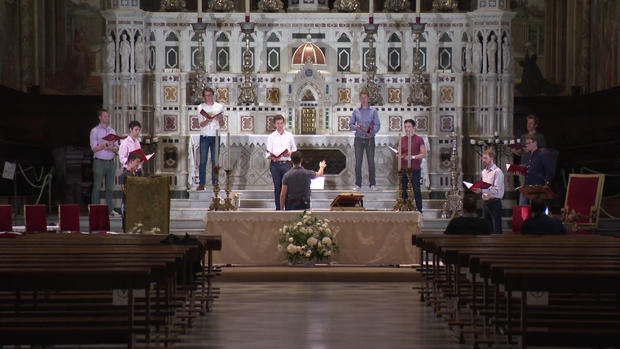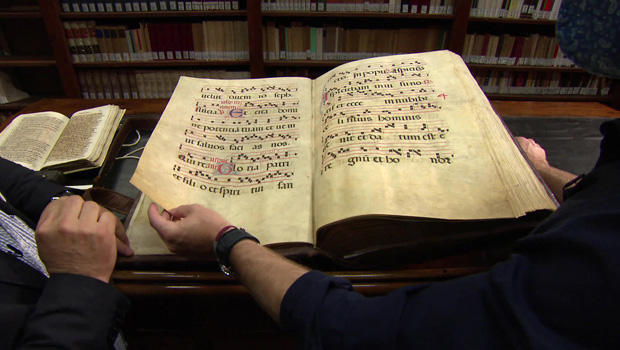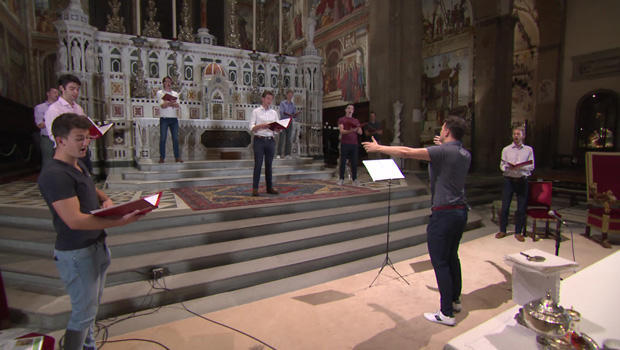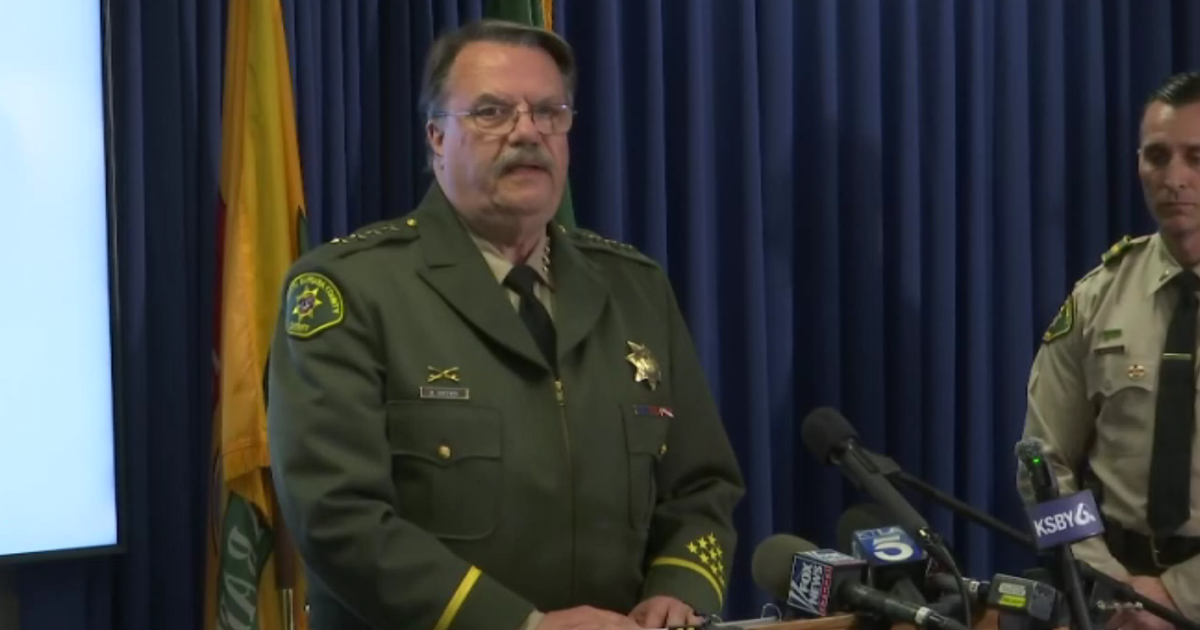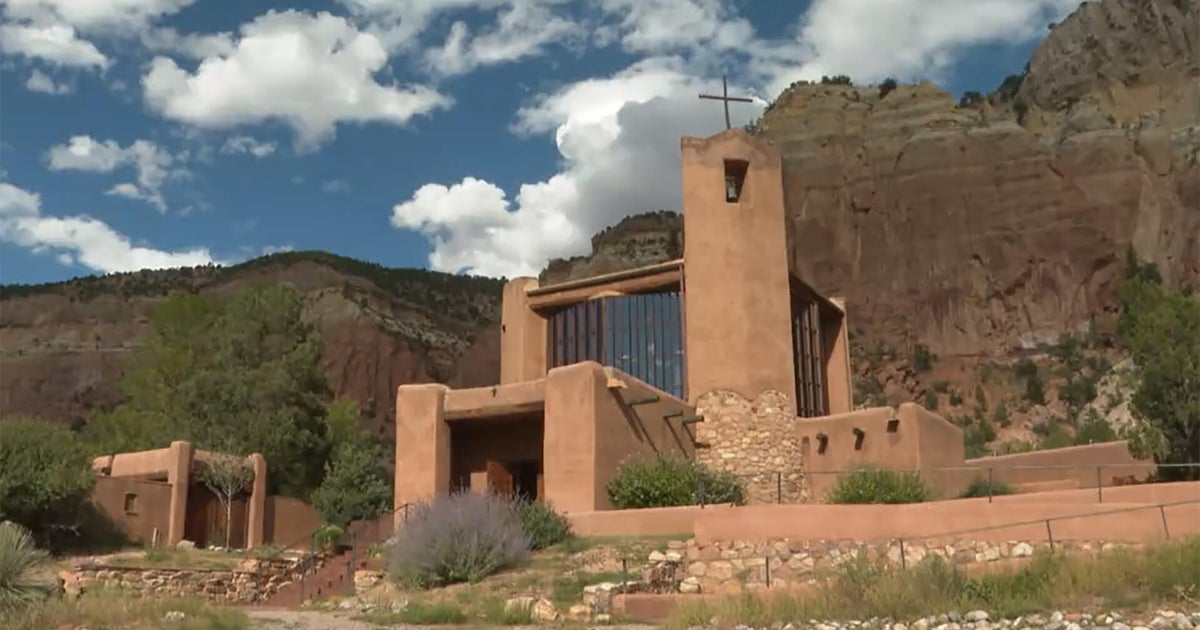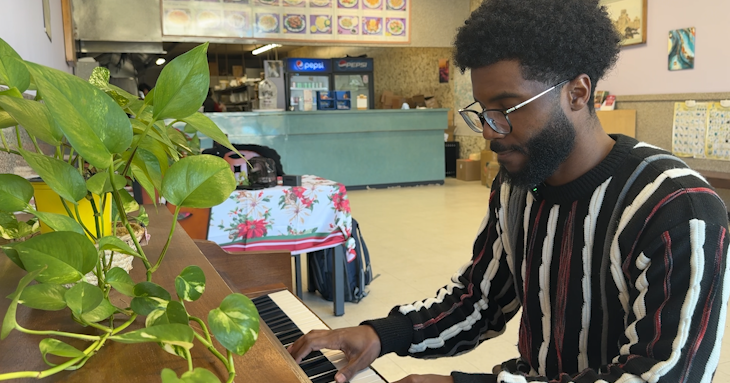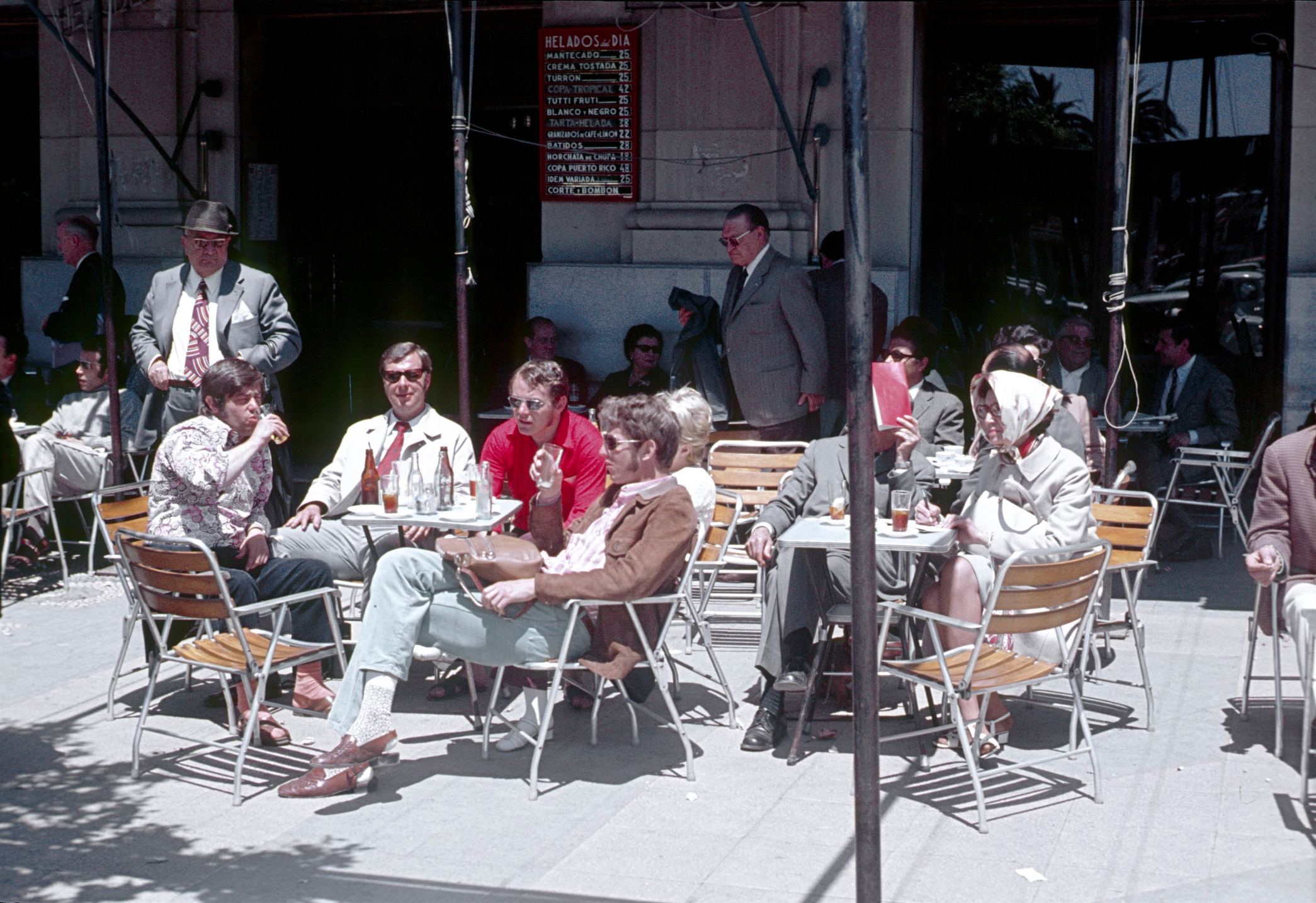Music and the Medici
Florence is a monument to the Renaissance, showcasing at every turn the art and architecture from that period, which continues to impress and inspire. It's clear what the Italian Renaissance looked like, but in the soaring Santa Maria Novella Basilica, "CBS Sunday Morning" got the rare chance to hear how it sounded, with music being heard for the first time in more than 400 years.
Mark Spyropoulos is director of Music and the Medici, and chief dreamer in this effort to unearth the until-now-unknown sacred music of this family who ruled this part of Italy 500 years ago.
"If you look at the artists that are produced at this time, it's a roll-call of the greatest artists in Western history: Leonardo da Vinci, Botticelli, Michelangelo, Raphael, the list just goes on and on of these incredible names," Spyropoulos said. "Really, they had no idea about music? That to me seems impossible."
Correspondent Seth Doane askd, "What's the answer?"
"Well, that's what we're working out."
His journey to "work that out" started back when he was singing at the Vatican as part of the so-called "Pope's choir." That's where, in 2018, we first met this British baritone, who reflected on the music, "We say, consider something beyond this world, beyond the everyday."
Spyropoulos told Doane, "When I was singing in the Sistine Chapel, and we were uncovering music from the Vatican archives, this made me think about archives and the potential for archives in other parts of Italy."
Scholar Alessio Assonitis recalled Spyropoulos coming to him and asking, "Well, where is the music?"
It was actually a reasonable question to pose to Assonitis, the director of the Medici Archive Project in Florence.
"What the archive is, is one long story," Assonitis said, "a story made up of millions and millions of narratives of a family that had an impact unlike no other family."
The project, which is funded mostly by Americans, is working to make accessible the more than three million letters and other documents which belonged to this powerful family, who were patrons of the arts (and pretty much everything).
Evidence of the Medicis' influence is everywhere in Florence. But Assonitis said the music may have simply fallen out of fashion – and so now, in the archive, they're uncovering a "new monument" here.
Assonitis showed Doane 16th century letters written to the Medici family seeking patronage: "A lot of artists, a lot of musicians, but also a lot of cooks and cobblers and all sorts of people write to the Duke saying, 'Here's what I've done.' Usually, in the case of music, 'Here is my mass, or my motets, you know, can you finance them?'"
The job of finding these manuscripts falls to musicologist Giordano Mastrocola. He usually scours Florence's vast state archives, but with COVID restricting access, Doane met him at the Santa Maria Novella Library. There, Mastrocola opened a massive music book from the late 1200s, which pre-dates the Medici. But in his search, sometimes it's a random find that's most intriguing.
Doane asked, "You're looking to see if someone's stuck something inside the book?"
"Yes, exactly," he replied. "Sometimes they could insert some new music at the end of the book."
Mastrocola would take a digital picture of a find, and send it to Spyropoulos, who then, note-by-note, transcribes the music, which was written down in separate parts.
"When we print modern music, they're stacked on top of each other – soprano, alto, tenor, bass," Spyropoulos explained. "But at this time, they would write out each part individually. So, that's a bit like having a play with all the words of one character written out completely, and then the next character and the all the things that they say written out completely…"
But as he places the notes of the various parts onto modern sheet music, the piece starts to emerge. "You really get the sense of what the composer is doing, and I can start to hear back how this music works," he said.
When there's enough to try out, Spyropoulos practices the individual part with singers.
It's music that's quite different from what we're used to hearing today.
"Any pop song has the tune that everyone sings along, you know, we all know the tune, and then underneath is the music that supports the tune," he said. "This music doesn't work like that. Here you have one, two, three, four, five, up to 10 melodic lines, so essentially, different songs which are put together."
Doane got a chance to hear that at a special rehearsal Spyropoulos set up to test the songs.
Doane asked, "It changes from what you've seen on the paper, to heard on the computer …"
"Oh, absolutely – it's like looking at a picture in black-and-white and then seeing it in color for the first time," Spyropoulos said.
And for the first time, likely in hundreds of years, those notes – just ink marks recovered from an old book – were brought to life again.
"Ultimately, the goal is to find, publish, perform and record this music," said Spyropoulos. "It's not enough that we just create new books of it. Music has to be heard. My real ambition is that we might find amongst all of this something close to a masterpiece."
For more info:
- Medici Archive Project, Florence
- Music and the Medici
- Santa Maria Novella, Florence
Story produced by Anna Matranga and Aria Shavelson. Editor: George Pozderec.
